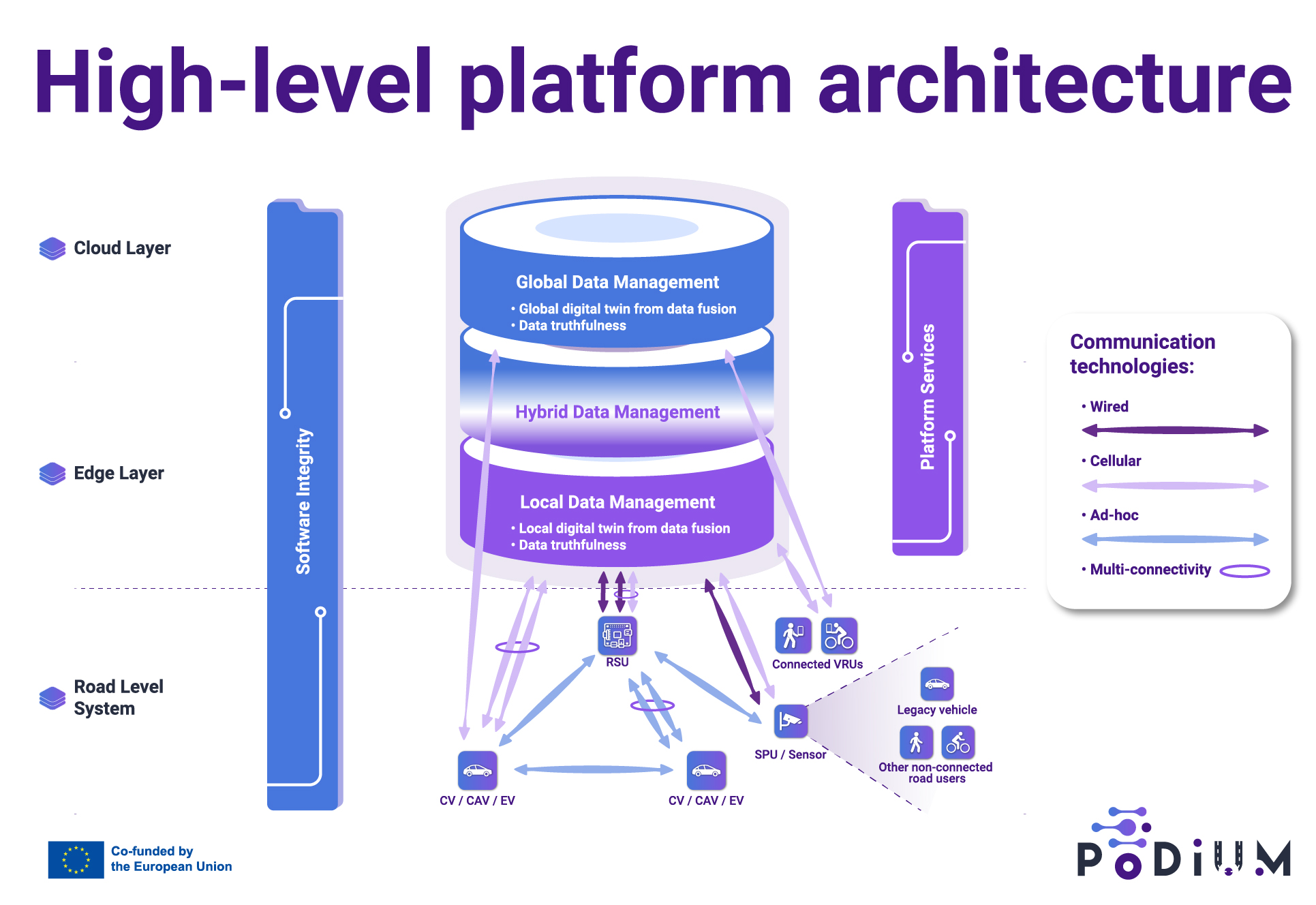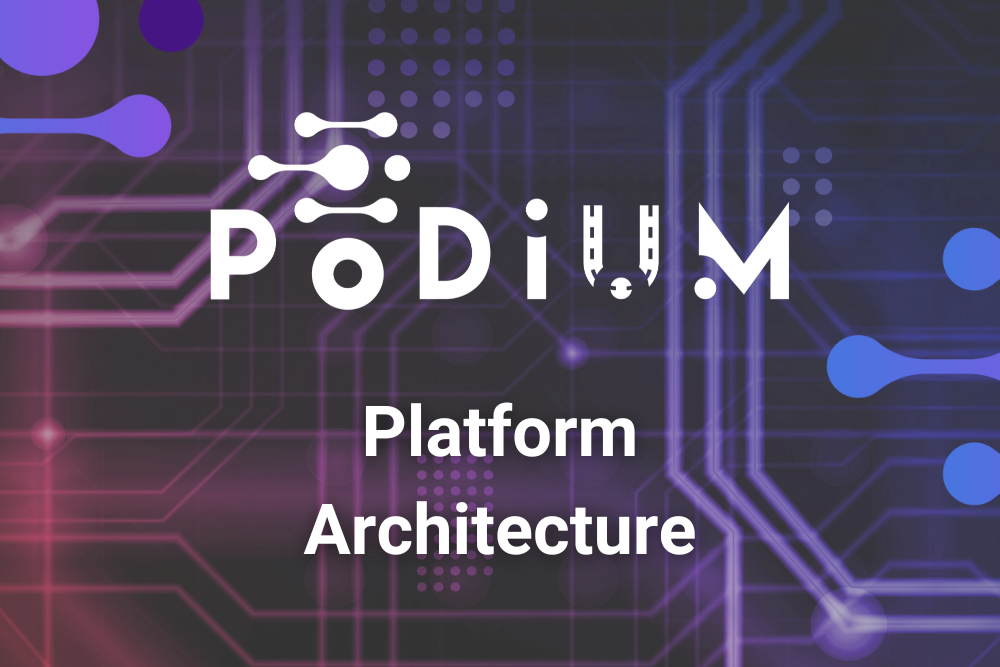As PoDIUM is about to celebrate its first year of existence, the project partners achieved a significant milestone with the specification of the PoDIUM high-level platform architecture. The PoDIUM architecture aims to serve as a reference blueprint for the deployment of advanced reliable and interoperable CCAM services in Europe. To reach this ambitious goal, PoDIUM is enhancing key Physical and Digital Infrastructure (PDI) technologies with a focus on multi-connectivity, hybrid data management, software integrity, and data truthfulness.
The five use cases that will be tested and validated in real-life conditions in the three project Living Labs in Germany, Spain, and Italy will use as a reference the PoDIUM platform architecture to ensure the interoperability of the specific technologies they aim to enhance, including networks and software components. The demonstration of the uses cases will also validate the overall system functionality and highlight its potential to improve CCAM services.

The figure shows the main enablers to be developed and implemented by PoDIUM. The general architecture includes CCAM services running on central cloud and edge layer. Road users, including Vulnerable Road Users (VRUs) and special vehicles like emergency vehicles, can either be directly connected to the infrastructure part of the system or can be detected by sensors from respectively equipped road users and/or infrastructure sensors. Besides the usual techniques comprising wired networks (e.g. fibre), cellular networks (e.g. 5G), or ad-hoc networks (ITS-G5), computing entities in the infrastructure as well as road users can make use of multi-connectivity for improved reliability and latency.
A hybrid data management layer takes care of the data from and for the edge and central cloud layers. Digital twin services are supported at both layers and fuse data from different sources with a respective regional or global focus. Similarly, by desgin other PoDIUM platform services can also be deployed flexibly either on edge or on cloud level.
To ensure the reliability of the PoDIUM platform data, methods to evaluate and ensure data truthfulness will be developed and implemented. Finally, software integrity methods will be implemented to ensure the reliability of the executed services and applications across all layers of the system.
The PoDIUM platform architecture is the result of the collective work of the PoDIUM partners. A detailed description of the PoDIUM platform architecture and its different views can be found in Deliverable D3.1 PoDIUM Platform Architecture Description, which will be publicly available on the project website soon.

